用于小面积热源测量的高灵敏悬臂梁温度传感器
邢志明,金 涛,郑璐璐
用于小面积热源测量的高灵敏悬臂梁温度传感器
邢志明,金 涛*,郑璐璐
上海理工大学光电信息与计算机工程学院,上海 200093
本文利用材料热膨胀系数不同的性质设计了一种可以对小面积热源进行高灵敏检测的温度传感器。该传感器的温度敏感元件是一个上表面镀有金属的氮化硅悬臂梁。由于金属与氮化硅的热膨胀系数不同,因此当悬臂梁所在的环境温度发生变化时,悬臂梁会向温度梯度变化快的方向发生弯曲,并且弯曲量与温度成正相关关系。实验中通过光杠杆测量梁的弯曲量,用标定的方式建立温度与探测器输出电压之间的关系。结果显示,该传感器的灵敏度可以达到4.86 mV/℃,以及0.04 ℃的温度分辨力。为验证传感器对小面积热源进行测量的适用性,我们利用NaYF4材料受激发热的性质,对不同面积热源产生的热量进行测量。结果显示,当发热面积约为0.07 mm2时依然可以进行准确测量,实现了对小面积热源温度进行精确测量的目的。
温度传感器;双材料微悬臂梁;热膨胀;NaYF4
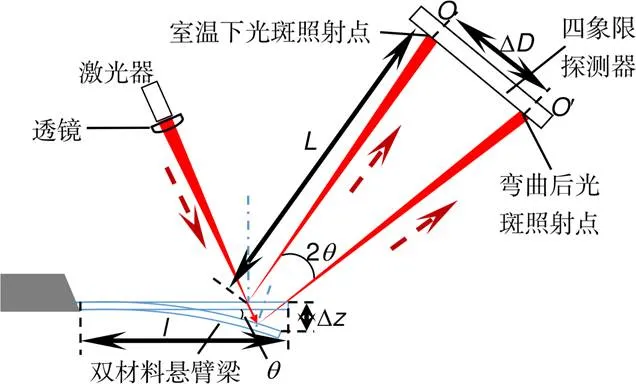
1 引 言
高精度的温度传感器是材料加工、化学分析与生物细胞研究中不可缺少的工具[1]。目前常用的温度传感器主要有以下几种[2]:分立式温度传感器,非接触式的热成像仪,模拟集成式温度传感器,以及光纤类型的温度传感器[3]。这些传感器有着各自不同的特点和优势。但是随着科技的进步,以及对相关测量设备要求的提高,这些温度传感器由于自身的缺陷使得其难以对一些特殊条件下的温度进行测量[4]。例如研究细胞内生化反应的过程时,温度往往会作为一个监控参数[1,5],但是常用的传感器无法对这种尺寸的热源进行测量,这就需要一种能够在热源面积较小的情况下依然可以对微小温度变化进行高灵敏度非接触测量的方法。国内哈尔滨工业大学提出一种利用锁相载流子成像技术和量子点薄膜进行测量的方法[6],但是这种方法在实施过程较为繁琐并且对被测物有一定的限制。近年来,随着微电子及微机械加工技术的成熟,利用双材料微悬臂梁实现对温度的探测成为一种新的方法[7]。国外研究机构提出一种悬臂梁动态测温法,即通过检测梁的共振频率偏移量来测量温度[8],但是频率偏移量往往只有几赫兹至十几赫兹,所以需要对梁振动的频率进行实时精确的控制与测量。以上方法对大热源进行测量时效果较好,但是在对较小面积的热源进行测量时却仍存在诸多缺陷。为实现对小面积热源温度测量以及简化系统设计的目的,本文设计了一种静态非接触悬臂梁测温传感器, 利用材料热膨胀系数不同的性质,通过光学方法测量悬臂梁受热时的弯曲幅度,并根据梁的弯曲幅度与温度的关系推算出被测物的温度。加上自身极小的尺寸,以及对温度敏感的特性,因此在小面积温度测量领域具有巨大的优势与应用前景。实验显示该方法可以实现对小面积热源进行高灵敏的测量。
2 理论分析
2.1 悬臂梁温度传感器原理部分
图1(a)为悬臂梁结构示意图,假设梁的长度为,金属层的厚度为1,氮化硅的厚度为2。当温度发生变化时,由于两种材料热膨胀系数不同,悬臂梁内部会产生不同大小的热应力,从而使悬臂梁发生弯曲。假设悬臂梁在室温为0时的弯曲量为0。当温度上升到(=0+D)时,梁的弯曲量为D如图1(b)。用简单梁理论,由微分方程(1)[9-10]可以求出梁由于两种材料热膨胀系数的差异在=处的弯曲幅度()。

其中:

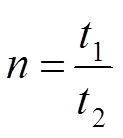
式(1)、式(2)中:a为热膨胀系数,E为杨氏模量,z(x)为悬臂梁在l=x处的弯曲幅度,下标1代表金属层,下标2代表氮化硅层。当温度发生变化时,梁的弯曲量可以通过解微分方程(1)求出:

通过等式(3)可以看出当=时梁具有最大的弯曲量。由等式(3)可以得到传感器的灵敏度r:

2.2 光杠杆测量方法
光杠杆的测量光路如图3所示。激光器发出的激光束经过透镜聚焦后照射到梁上表面的金属层,光束发生反射后,反射光束进入到四象限探测器(PSD)中。当梁发生弯曲时,反射到探测器上光斑的位置会发生变化,导致探测器输出电压也会发生变化,因此可以通过测量探测器的输出电压来描述梁的弯曲幅度。
当梁发生弯曲时,我们定义梁自由端弯曲的幅度和角度分别为D和。根据几何关系,反射光束偏转的角度是2。假设反射到探测器上的光斑位置由移动到¢,移动的距离为D,梁的长度为,悬臂梁上激光照射点到探测器的距离为,可以计算出激光光斑在探测器上发生的位移为[11]

探测器输出为电流信号,建立弯曲幅度与电流之间的关系式[12]:
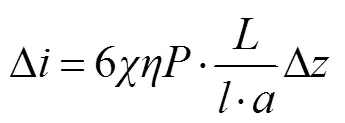

由式(6)、式(7)可以看出光斑在探测器上移动的距离与探测器输出的电压成正比关系。
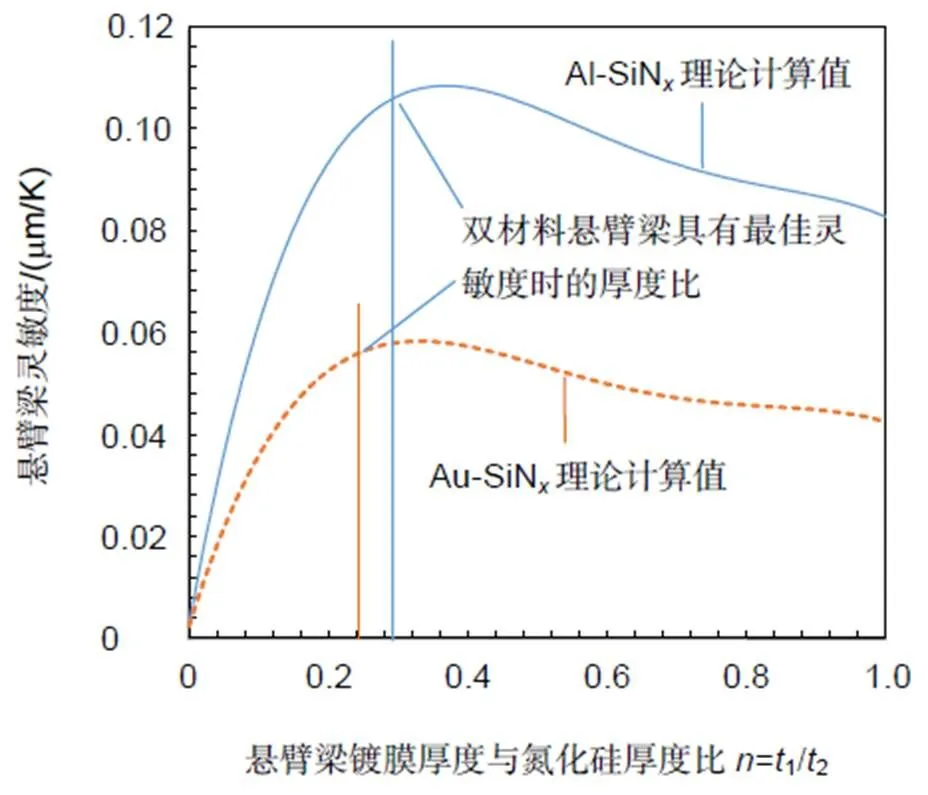
图2 不同镀层的双材料悬臂梁厚度比n=t1/t2对传感器灵敏度Sr的影响。红色虚线为Au-SiNx的理论灵敏度,蓝色实线为Al-SiNx的理论灵敏度

图3 光杠杆测量悬臂梁弯曲量的原理图



3 实验过程与结果分析
3.1 静态稳定性测量与温度标定
由于该传感器采用的是静态测量方式,所以系统的静态稳定性将会对测量结果产生决定性的影响。调整探测激光器、悬臂梁、探测器的位置,使光斑聚焦在悬臂梁自由端,如图4(b-2),并且使反射的光束照射在探测器中心。把搭好的装置(如图4(b-1))放在室温环境中(室温为23.9 ℃),控制室温使其保持恒定,记录一小时内探测器的输出电压。实验结果如图5(a)所示。从图中可以看出探测器输出信号的峰-峰值始终保持在0.2 mV以内,并且输出信号服从高斯分布,标准差为5.14´10-5,两条红色虚线之间的部分为探测器输出信号满足3原则时的范围,因此可以说明装置的稳定性。并且可以认为系统的本底噪声是0.2 mV,该噪声的大小直接决定了实际测量的分辨力。


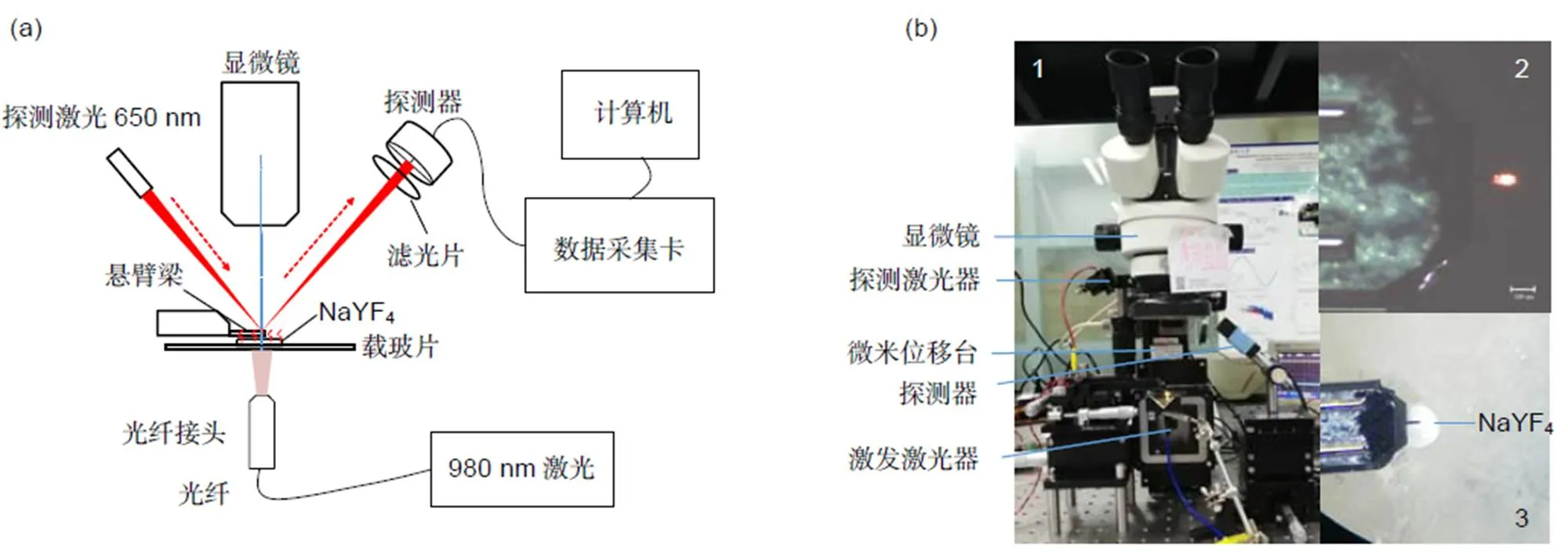
图4 (a) 测温实验装置结构示意图;(b) 1为悬臂梁温度传感器实验装置图,2为探测激光在梁尖端的聚焦光斑,3为显微镜下观察到的NaYF4

图5 (a) 蓝色散点为1 h内探测器输出的信号,红线为满足3δ原则时的输出电压范围;(b) 探测器输出信号的噪声密度谱

3.2 在相同功率密度下对不同面积的热源进行测量
NaYF4是目前氟化物类上转换荧光材料中声子能量最低、荧光效率最高的基质材料。NaYF4在受激发发光的过程中通常也会伴随着热量的产生。根据能量守恒定律,当NaYF4受激发光时会抑制光到热的转化效率,因此为了提高光热转化效率,降低辐射跃迁几率或消除辐射跃迁过程就显得尤为重要。研究表明,掺有Yb3+/Er3+的NaYF4发热离子组合在980 nm波长处具有较强的光吸收,在500 nm~570 nm波长范围内有一个比较明显的发光峰,在室温下用980 nm波长的激光激发时就可以观察到明亮的绿光,随着激发功率的增大发光强度与发热量将会增加[13]。
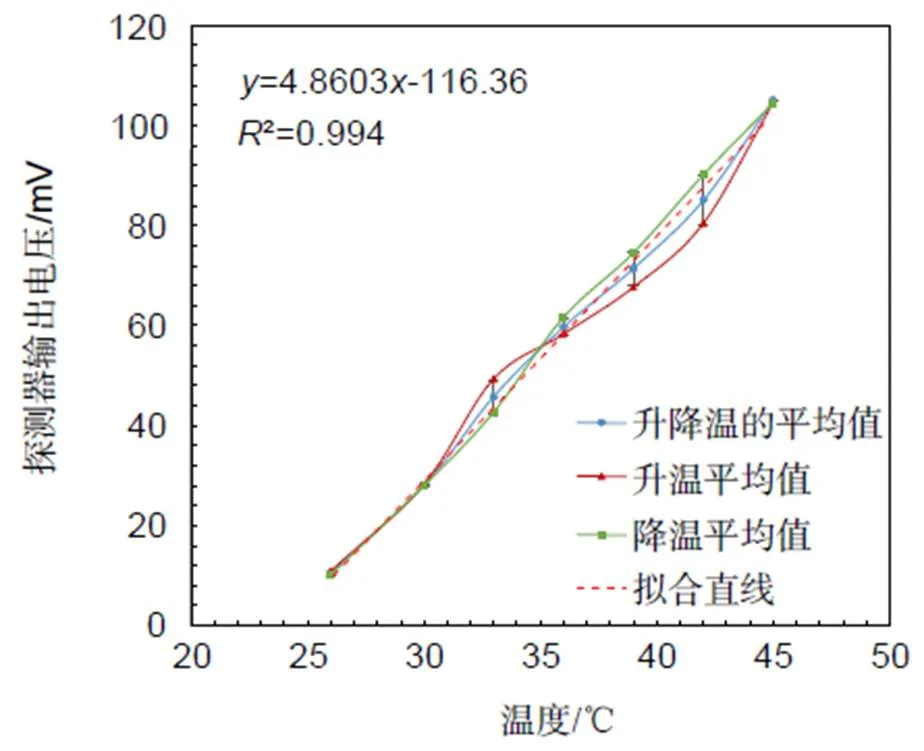
图6 调节电阻发热量,对每个测温点多次测量的结果计算平均值,并对测量曲线用一次函数拟合
为验证传感器对小面积热源温度进行测量的适用性,我们设计了如下的实验。用移液枪分别把不同体积的NaYF4溶液(100mg/mL)滴到图4(a)实验装置的载玻片上。经过测量,溶液在载玻片上形成的面积大约为0.07 mm2、0.31 mm2、0.88 mm2、1.39 mm2、2.01 mm2、3.31 mm2、4.95 mm2。溶液在载玻片上的面积为0.07 mm2、0.88 mm2时对应的热源直径分别约为0.29 mm,1.05 mm。调整载玻片与激光器的位置,使NaYF4溶液在悬臂梁的正下方,并且使受激产生的绿色荧光达到最亮。实验中激发激光的功率密度为1.12 mW/mm²。由于热源较小无法进行接触测量,同时也为了突出悬臂梁测温法对小面积热源进行测量时的适用性以及优势,在实验中同时采用热成像仪(空间分辨力约为1 mm)记录纳米材料受激发热的温度,并对二者的测量结果进行对比。为避免激光连续照射产生的热效应,实验采用了间断照射的方式来激发纳米材料。用激光依次照射各份NaYF4样品,并用数据采集卡记录每份NaYF4对应的探测器输出电压,然后根据拟合出的温度—电压方程计算出相应的温度。热成像仪测得的结果如图7,对比两种测量结果如图8。当热源面积大于0.88 mm2时两种测量结果差距较小,差值在-0.15 ℃~ 0.36 ℃之间。当热源面积小于0.88 mm2时(此时热源直径约为1 mm),两种方法测得的结果相差较大。其原因是受热成像仪空间分辨力、热量多少以及红外发射率的影响,当热源尺寸小于其空间分辨力的时,测得的温度为热源表面某点小面积的平均温度,加上空间温度扩散等因素导致其测得的温度要低于实际温度。因此可以说明当热源面积小于其空间分辨力时用成像仪测温的方法将不再适用。
而悬臂梁测温法是根据两种材料热膨胀系数不同设计的,其几何尺寸可以做到微米甚至纳米(例如本文所用的原子力显微镜探针),因此其受热面积较小可以实现高空间分辨率的温度测量。其次,对于一些发热量较小的热源或温度梯度变化迅速的情况下,热源附近(如近场范围)的温度接近环境温度,热成像仪等方法也无法准确对温度进行测量,但是本文所提方法中悬梁臂与热源的距离可以通过光杠杆和压电驱动器进行控制,可以实现纳米精度的控制[14],以对温度场进行精密测量。所以该方法可以用于弥补大型传感器在对小面积热源进行精确测量时的不足。为了验证热源面积小于0.88 mm2时悬臂梁传感器测得值的正确性,我们采用了参考文献[15]中提供的方法,利用材料的上转换发光性质通过分析不同温度下绿光发射强度比H/S计算出0.07 mm2对应的温度为28.3 ℃。与悬臂梁传感器测得的温度差异较小。同时还对其他温度值也进行了验证,其差异均在0.8 ℃范围内。因此可以证明该方法的正确性。
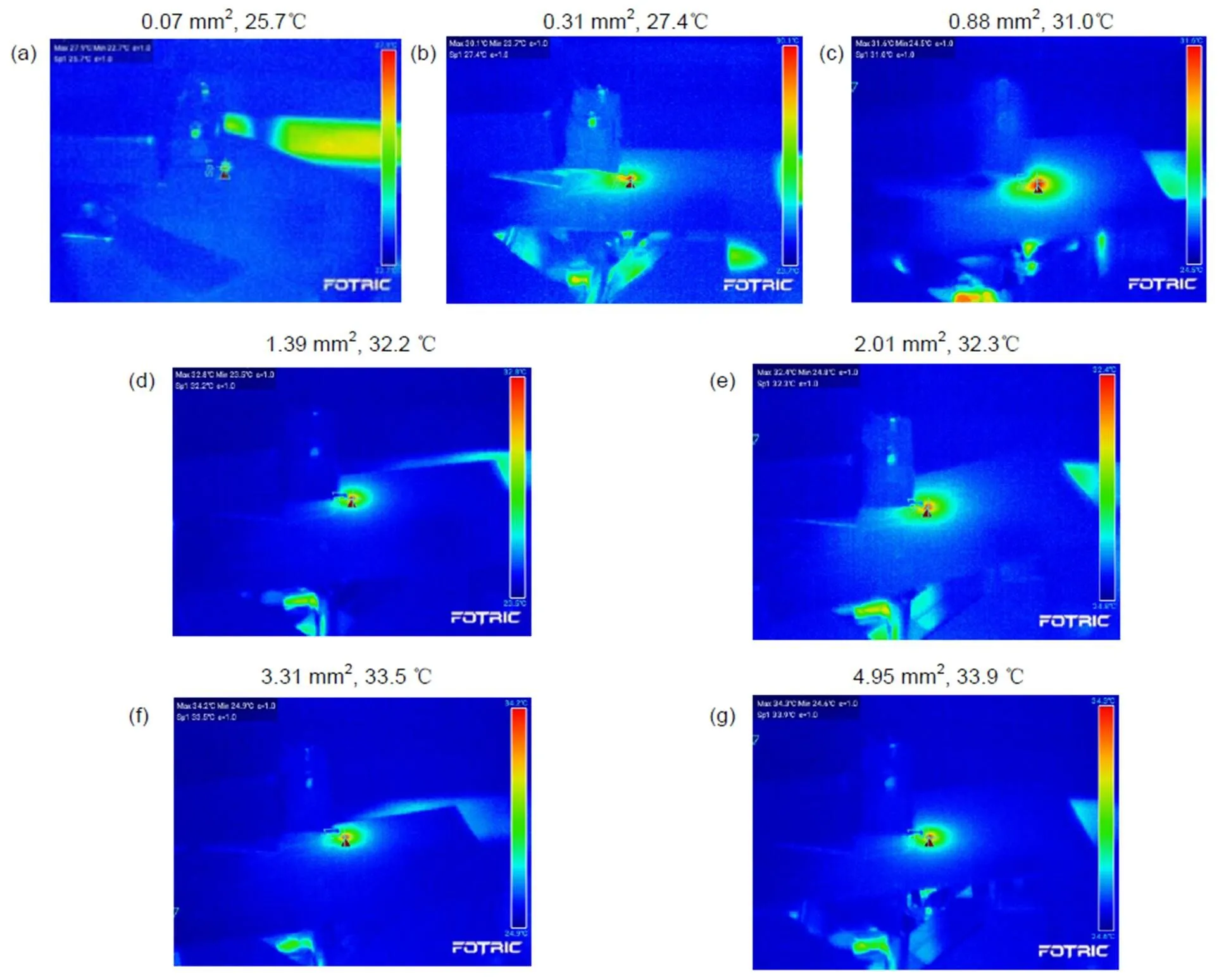
图7 激发功率密度为1.12 mW/mm²时,热成像仪对每个面积下纳米材料发热情况的测量结果图

图8 用1.12 mW/mm²的激光激发时,分别用悬臂梁与热成像仪记录材料的发热温度,并绘制出两种测温结果的对比图
4 总结与展望
本文利用双层悬臂梁热膨胀系数不同的特性以及光杠杆原理设计制作了一种悬臂梁在静态模式下测量物体温度的传感器。当环境温度变化时,通过光杠杆测量梁的弯曲量,并推算出温度值。为获得梁的最大灵敏度,结合相关理论给出了最佳厚度比,但是由于条件限制,无法自行设计制造这种悬臂梁,所以利用商用悬臂梁对理论分析结果进行了实验验证,分辨力达到了0.04 ℃。由于悬臂梁体积极小,因此可以用于测量体积极小的物体的发热量,通过实验可以看出,当发热面积只有0.07 mm²的时候依然可以准确测量出温度。在生物应用中,下一步我们将会把药物注射到培养的细胞中,观察细胞在吸收药物的过程中发热情况,以此给出药效评判。
[1] Grover W H, Bryan A K, Diez-silva M,. Measuring single-cell density[J]., 2011, 108(27): 10992–10996.
[2] Childs P R N, Greenwood J R, Long C A. Review of temperature measurement[J]., 2000, 71(8): 2959–2978.
[3] Wang H, Zheng G, Chen H B. Frequency-modulated continuous-wave laser interferometric optical fiber temperature sensor[J]., 2019, 46(5): 180506.
王欢, 郑刚, 陈海滨, 等. 调频连续波激光干涉光纤温度传感器[J]. 光电工程, 2019, 46(5): 180506.
[4] Ba D X, Chen C, Fu C,. A high-performance and temperature-insensitive shape sensor based on DPP-BOTDA[J]., 2018, 10(1): 7100810.
[5] Toda M, Inomata N, Ono T,. Cantilever beam temperature sensors for biological applications[J]., 2017, 12(2): 153–160.
[6] Harbin Institute of Technology. A cell temperature measurement system: CN106768406B [P]. 2019-03-26.
哈尔滨工业大学. 一种细胞温度测量系统: 中国,CN106768406B[P]. 2019-03-26.
[7] Tang B B, Collings S K, Xiao H,. Bi-material strip based temperature sensor design and optimization through thermo-mechanical multi-physics modeling[J]., 2019, 10(1): 1–10.
[8] Boisen A, Dohn S, Keller S S,. Cantilever-like micromechanical sensors[J]., 2011, 74(3): 036101.
[9] Barnes J R, Stephenson R J, Woodburn C N,. A femtojoule calorimeter using micromechanical sensors[J]., 1994, 65(12): 3793–3798.
[10] Roark R J, Young W C. Formulas for stress and strain[J].1976, 43(3): 522.
[11] Wu Y, Liu X M, Yang G G. Signal process in a novel system for nano-displacement measurement based on optical lever[J]., 2007, 34(7): 30–34, 38.
吴宇, 刘晓旻, 杨国光. 光杠杆纳米微位移测量系统中的信号处理[J]. 光电工程, 2007, 34(7): 30–34, 38.
[12] Fukuma T, Jarvis S P. Development of liquid-environment frequency modulation atomic force microscope with low noise deflection sensor for cantilevers of various dimensions[J]., 2006, 77(4): 043701.
[13] Wang J J, Pang T. Hydrothermal synthesis of NaYF4: Yb3+, Sm3+and photo-thermal effect under 980 nm excitation[J].2019, 49(2): 311–318.
王嘉俊, 庞涛. NaYF4: Yb3+/Sm3+的水热合成及980nm激发下的光致发热[J]. 中国科学: 化学, 2019, 49(2): 311–318.
[14] Chu C L, Fan S H. A novel long-travel piezoelectric-driven linear nanopositioning stage[J]., 2006, 30(1): 85–95.
[15] Boyer J C, Cuccia L A, Capobianco J A. Synthesis of colloidal upconverting NaYF4: Er3+/Yb3+and Tm3+/Yb3+monodisperse nanocrystals[J].2007, 7(3): 847–852.
A highly sensitive cantilever temperature sensor for small-area heat source temperature measurement
Xing Zhiming, Jin Tao*, Zheng Lulu
School of Optical-Electrical and Computer Engineering, University of Science and Technology, Shanghai 200093, China

Comparison of measurement results between cantilever beam and thermal imager
Overview:High-precision and high-sensitivity temperature sensors are indispensable tools for material processing and biological cell research. For example, the temperature generated from biochemical reactions is a crucial indicator in the research of drugs in cells. However, the drug produces less heat through biochemical reactions in cells, and the cell volume is limited. Furthermore, the existing temperature sensor can only give a rough temperature range when measuring a very small heat source, so the high-sensitivity and high-precision measurement purpose cannot be achieved. Therefore, it requires a method that can accurately measure small-area heat sources. A static temperature sensor of non-contact cantilever beam is designed to measure the temperature of small-area heat sources and simplify the system design. The temperature sensitive element of the sensor is a silicon nitride cantilever beam which is coated with metal on its upper surface. Due to the difference of thermal expansion coefficients between metal and silicon nitride, the cantilever beam will bend in the direction where the temperature gradient changes rapidly when the ambient temperature of the cantilever beam changes, and the bending amount is measured by optical lever. The relationship between the temperature and the output voltage of the detector can be established by converting the bending amount into electrical signals with the detector. Through the theoretical analysis, the result shows that the bending amount is positively correlated with the change of temperature. Under the laboratory conditions, the relationship between the detector output voltage and the standard temperature can be established as= 4.8603 116.36 by calibration. The goodness of fit is greater than 0.99, the sensitivity is 4.86 mV/℃, and the temperature resolution is 0.04 ℃. To verify the applicability of this method for measuring small-area heat sources, we used the property of the NaYF4material that can generate heat when excited by laser. We also set up heat sources with different areas and measure the heat generated by the heat source. The results show that it still can be measured even the heating area is only 0.07 mm2. Finally, we prove the correctness of the experimental results by analyzing the relationship between the spectrum of the excited emission of NaYF4and temperature. Thereby, the purpose of accurately measuring the temperature of the small-area heat source is realized.
Citation: Xing Z M, Jin T, Zheng L LA highly sensitive cantilever temperature sensor for small-area heat source temperature measurement[J]., 2020, 47(6): 190296
A highly sensitive cantilever temperature sensor for small-area heat source temperature measurement
Xing Zhiming, Jin Tao*, Zheng Lulu
School of Optical-Electrical and Computer Engineering, University of Science and Technology, Shanghai 200093, China
In this paper, a kind of temperature sensor which can detect a small-area heat source with high sensitivity is designed by using the property of different thermal expansion coefficients of materials. The temperature sensitive element of the sensor is a silicon nitride cantilever beam which is coated with metal on its upper surface. Due to the difference of thermal expansion coefficients between the metal and silicon nitride, the cantilever beam will bend in the direction of rapid change of the temperature gradient, and the bending amount will be positively correlated with the temperature when the ambient temperature of the cantilever beam changes. In the experiment, the bending amount of the beam is measured by the optical lever, and the relationship between the temperature and the output voltage of the detector is established by calibration. The results show that the sensitivity of the sensor can reach 4.86 mV/℃ and the temperature resolution can reach 0.04 ℃. In order to verify the applicability of the sensor for measuring the small-area heat source, the heat generated by heat sources of different areas is measured depending on the calorific property of NaYF4under laser excitation. The results show that it still can be measured even the heating area is only 0.07 mm2and the accurate measurement for temperature of the small-area heat source can be realized.
temperature sensor; bi-material cantilever; thermal expansion; NaYF4
S951.4+1;O482
A
10.12086/oee.2020.190296
: Xing Z M, Jin T, Zheng L L. A highly sensitive cantilever temperature sensor for small-area heat source temperature measurement[J]., 2020,47(6): 190296
邢志明,金涛,郑璐璐. 用于小面积热源测量的高灵敏悬臂梁温度传感器[J]. 光电工程,2020,47(6): 190296
Supported by National Natural Science Foundation of China (510605297, 51705324) and Natural Science Foundation of Shanghai (16ZR1423000)
* E-mail: jintao@usst.edu.cn
2019-05-31;
2019-08-06基金项目:国家自然科学基金资助项目(510605297, 51705324);上海市自然科学基金资助项目(16ZR1423000)
邢志明(1992-),男,硕士研究生,主要从事精密测量的研究。E-mail:1076187742@qq.com
金涛(1985-),男,副教授,主要从事精密测量的研究。E-mail:jintao@usst.edu.cn

